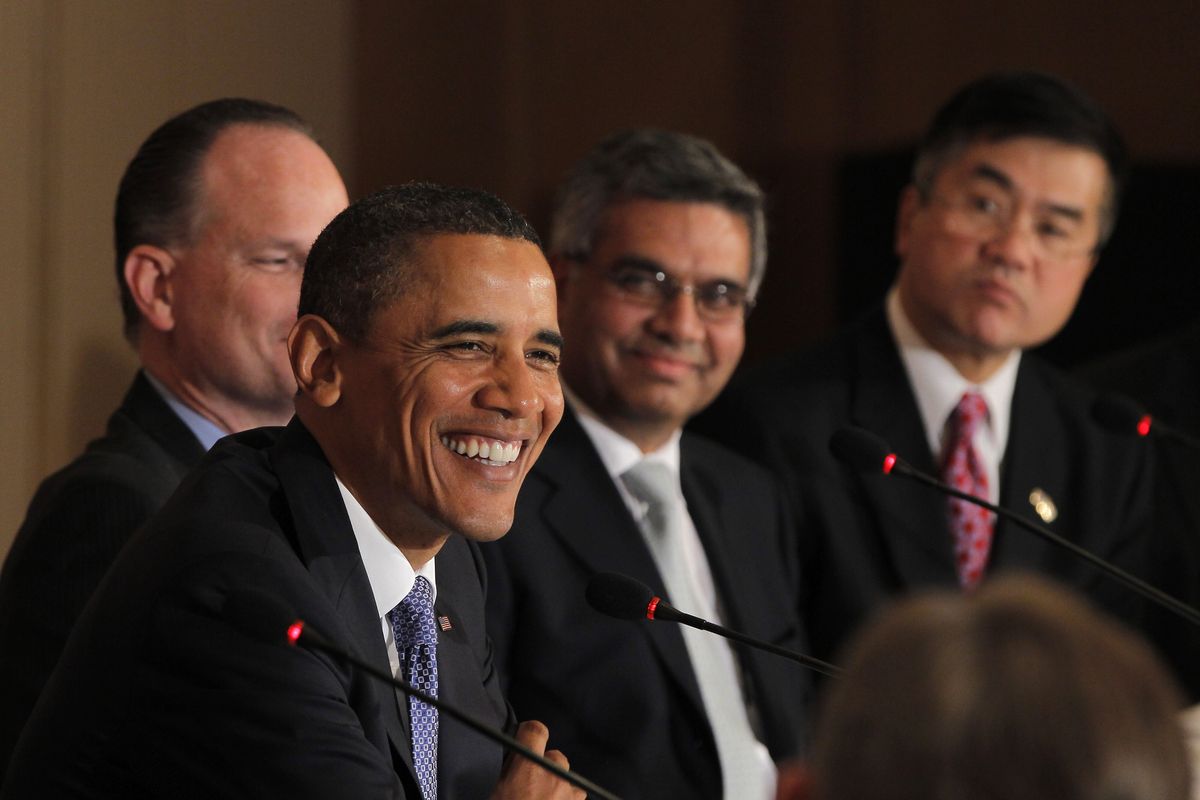Obama announces deals with India
President pushes for closer economic ties as visit begins

MUMBAI, India – The Obama administration on Saturday announced $9.5 billion in private-sector export deals with India that it said would support an estimated 54,000 jobs in the United States as President Barack Obama began a three-day visit to the nation intended to deepen U.S.-India trade ties.
The deals include a $4.1 billion “preliminary” agreement for India to buy 10 C-17 military transport aircraft from Boeing, the purchase of 30 Boeing 737 passenger planes by an Indian airline for $2.7 billion, the sale of 107 combat jet engines to India by General Electric, valued at $800 million, and the purchase of a new electricity generating GE gas turbine that is assembled in Greenville, S.C., a deal worth $722 million and responsible for supporting nearly 3,000 jobs.
Most of the deals had been in the works for months, but the White House made them public on Saturday, the first day of Obama’s three-day visit to India, to underscore what the president said should be a growing economic relationship between the United States and India, whose economy is expected to grow by 8 percent each year for the next five years.
Obama carefully noted the number of jobs each deal was credited with supporting – from 22,000 jobs in 44 states from the Boeing C-17 sale to the five in Maine supported by the deployment in rural India of a U.S.-built mobile telephone antenna system.
“There are many Americans whose only experience with trade and globalization has been a shuttered factory or a job that was shipped overseas,” Obama told a U.S.-India Business Council summit that drew hundreds of representatives from both countries.
“Here in India, I know that many still see the arrival of American companies and products as a threat to small shopkeepers and to India’s ancient and proud culture,” he said.
“But these old stereotypes, these old concerns, ignore today’s reality … it is a dynamic two-way relationship that is creating jobs, growth and higher living standards in both our countries.”
The Obama administration also announced that it would support India’s phased-in full membership in the world’s major nonproliferation regimes, despite the fact that India has not signed the Nuclear Non-Proliferation Treaty.
The decision to support India’s membership in the Nuclear Suppliers Group, among others, drew immediate criticism from some who feared the action would fuel the Indo-Pakistan nuclear arms race and weaken the international system designed to prevent the spread of nuclear weapons.
There was no immediate reaction from Pakistan, which views improving India-U.S. relations with suspicion, even as the U.S. works to encourage Pakistan to crack down on Taliban and al-Qaida forces that have sought refuge in Pakistan’s regions bordering Afghanistan.
Obama didn’t discuss Pakistan-India relations on Saturday, though the tensions between the two were never far from the surface.
At the Taj Mahal Palace and Tower hotel, where Obama is staying, the president and first lady Michelle Obama signed a guest book and placed white roses at a courtyard memorial to victims of the Nov. 26, 2008, terrorist attacks that killed more than 160 people, including Americans. India blames Pakistan for the attacks.
But the bulk of the day was spent encouraging U.S. and Indian business leaders to find ways to turn India’s 1.2 billion people into a market that can help the American economy rebuild over the long term after a deeply damaging recession.
In the past eight years global merchandise imports quadrupled to nearly $258 billion. The United States accounts for 6 percent of that market now. California, Texas, Washington, New York and Florida are the largest state exporters to India.
Also on Saturday, Michelle Obama played hopscotch, danced and sang with 33 disadvantaged children from the Indian charity Make a Difference at the University of Mumbai.
She spoke to the children about the importance of an education.
“I didn’t grow up with a lot of money,” Obama said. “I never even imagined being the first lady of the United States. But because I had an education, when the time came to do this, I was ready.”
Before leaving, the first lady sent each child home with a tote bag stuffed with educational materials – notebooks, pencils and pen – and White House M&Ms.